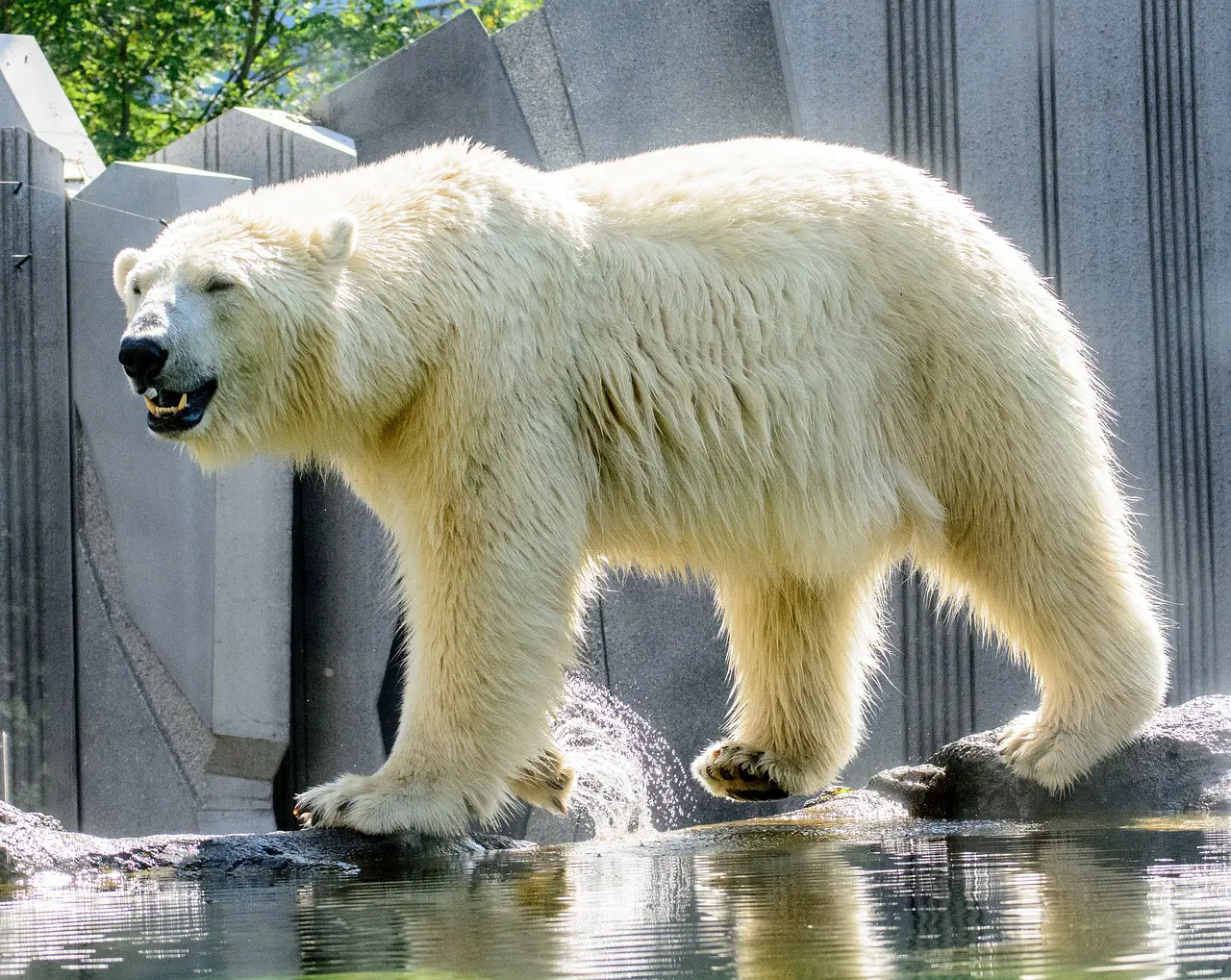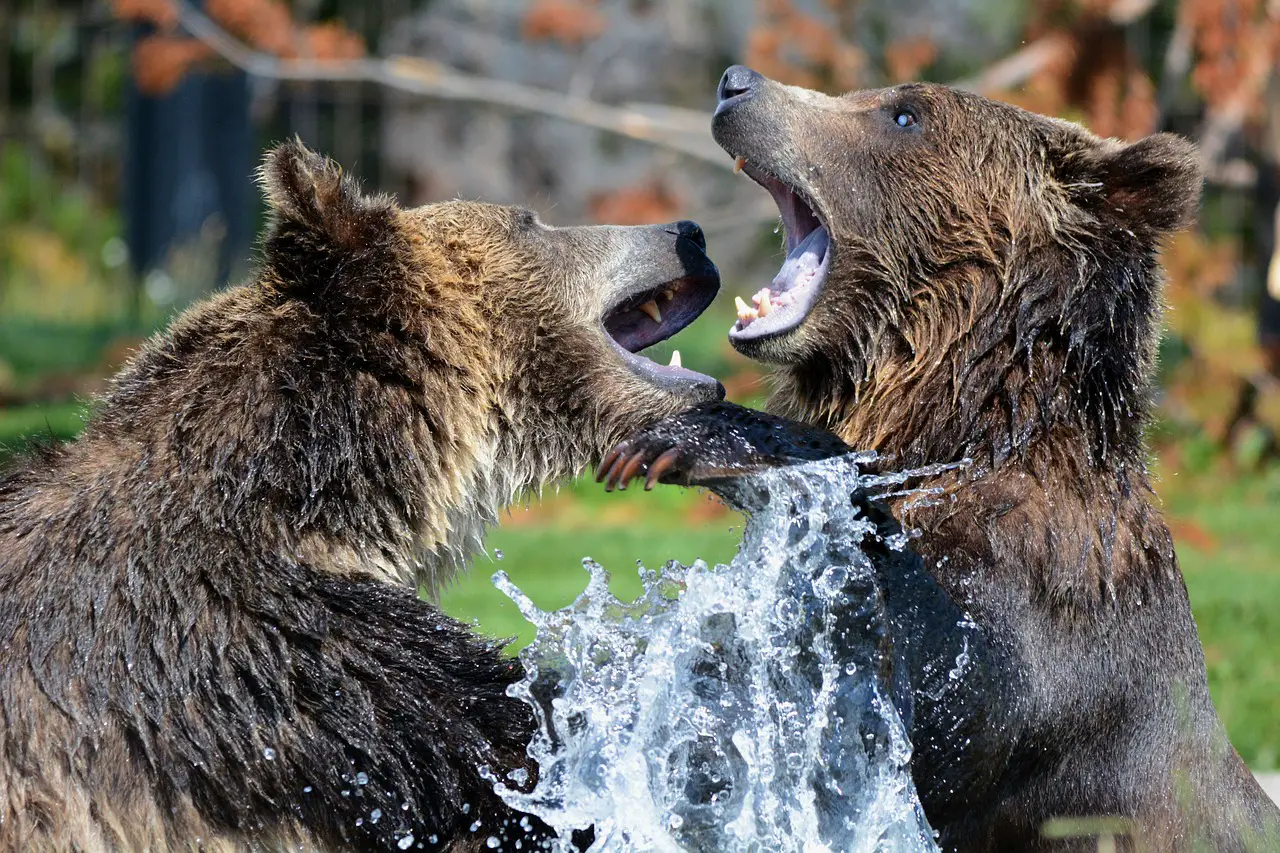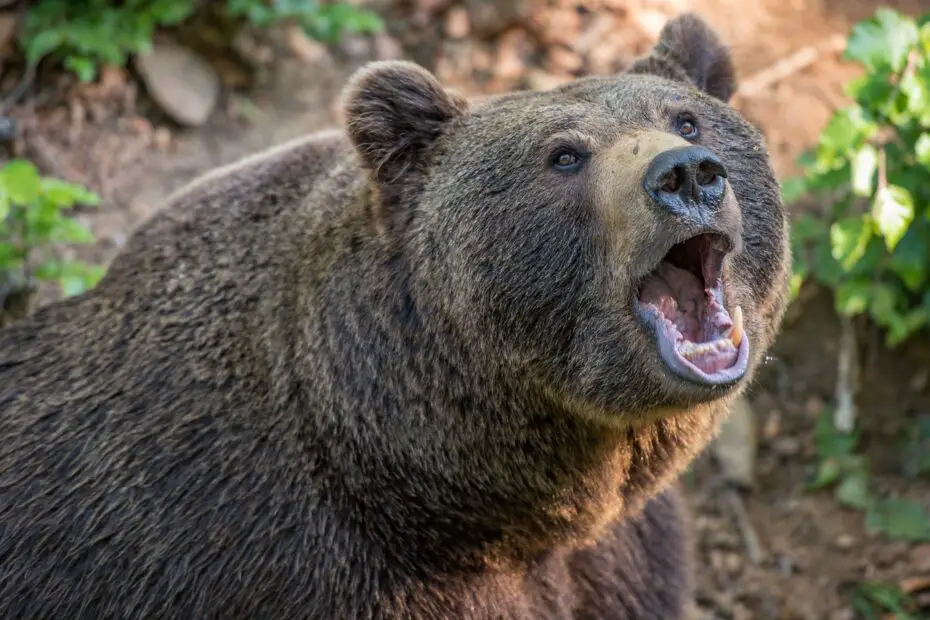Bears, with their imposing presence and powerful physiques, have long captivated our imaginations. Among the many remarkable aspects of bears, the bears teeth play a crucial role in their survival and adaptation.
From carnivorous bears equipped for hunting to omnivorous bears capable of consuming a variety of foods, their dental structures have evolved to suit their specific diets. In this article, we will delve into the intriguing world of bear teeth, exploring their adaptations, unique features, and implications for conservation.
You may also want to read about grizzly bear vs polar bear.
Understanding Bear Teeth
Like many mammals, bears possess different types of teeth that serve specific purposes. These include incisors, canines, premolars, and molars. Each type of tooth is specialized for particular functions, enabling bears to effectively consume their preferred foods.
The incisors, located at the front of the mouth, are used for gripping and tearing food. Canines, often associated with a bear’s fearsome reputation, are long, pointed teeth used for seizing and puncturing prey. Premolars and molars, situated at the back of the mouth, are responsible for grinding and crushing food.

Adaptations for Diet
The shape and structure of a bears teeth are directly linked to the type of diet each bear species follows. Carnivorous bears, such as polar bears and grizzly bears, have long and sharp canines, ideal for capturing and subduing prey. These teeth, coupled with powerful jaws, enable them to tear through flesh and consume meat efficiently.
On the other hand, omnivorous bears like black bears have a more varied diet that includes both meat and vegetation. A bears teeth reflect this omnivorous lifestyle, with strong canines for tearing flesh and broad premolars and molars for grinding plant material.
Carnivorous Bears
Carnivorous bears, such as the polar bear and the grizzly bear, rely heavily on meat for their sustenance. Their teeth are specifically adapted for hunting and consuming prey. The long, sharp canines of these bears are crucial tools for capturing and immobilizing their quarry. With these formidable teeth and powerful jaw muscles, they can easily tear into the flesh of their prey.
Additionally, carnivorous bears have strong premolars and molars that allow them to crunch through bones and extract every bit of nutrition from their catches. This adaptability to a carnivorous diet has been essential to the survival and evolutionary success of these bear species.
Omnivorous Bears
Unlike their carnivorous counterparts, omnivorous bears, such as the black bear, have a more diverse diet that includes both animal matter and plant material. A bears teeth reflect this dietary flexibility. The canines of omnivorous bears are still present but are generally shorter and less pronounced compared to those of carnivorous bears.
What distinguishes omnivorous bears are their broad premolars and molars. These teeth are instrumental in grinding and crushing plant matter, such as fruits, nuts, and vegetation. The versatility of their teeth allows them to extract nutrients from various food sources, making them highly adaptable in different environments.
Dental Health of Bears
Maintaining good dental health is essential for bears to thrive in the wild. Natural behaviors like gnawing on bones, rubbing their teeth against rough surfaces, and chewing on fibrous vegetation contribute to the overall well-being of their teeth. These activities help keep their teeth clean, remove plaque buildup, and prevent dental issues that could impact their ability to feed effectively.
It’s fascinating to observe how bears instinctively engage in behaviors that promote dental hygiene, even in the absence of modern dental care. These behaviors are ingrained in their natural instincts and contribute to their overall dental health.
Unique Features of Bear Teeth
Bear teeth possess several unique features that distinguish them from other animals. One notable feature is the size and shape of their canines. In certain bear species, such as the polar bear, the canines can grow up to 10 centimeters in length, serving as impressive weapons for capturing prey.
Another distinguishing feature is the specialized molars of bears. Some bear species, like the spectacled bear, have evolved flattened molars with cusps that enable them to efficiently grind tough plant materials.

Comparisons to Other Animals
When comparing bear teeth to those of other carnivorous or omnivorous animals, we can observe fascinating similarities and differences. For example, the teeth of bears share similarities with those of other carnivores like wolves or big cats. However, bears’ dental adaptations for omnivory, with their broader molars for plant material, set them apart from purely carnivorous predators.
Similarly, omnivorous bears share dental characteristics with other omnivorous animals, such as raccoons or primates, reflecting the evolutionary convergence that occurs when animals adapt to a mixed diet.
Implications for Conservation
Understanding the dental adaptations of bears holds significant implications for their conservation. By comprehending the link between their teeth and diet, conservationists can gain insights into the nutritional requirements and habitat needs of different bear species.
Conservation efforts should focus on preserving the natural habitats and food sources that support the diverse dental adaptations of bears. Protecting bear populations ensures their continued access to the appropriate foods necessary for their dental health and overall well-being.
Conclusion
The teeth of bears offer a fascinating glimpse into the world of these majestic creatures. From carnivorous bears with their sharp canines to omnivorous bears with their versatile dentition, their dental adaptations have allowed them to thrive in various environments. Understanding bear teeth not only enhances our knowledge of their evolutionary history but also highlights the importance of their conservation.
Next time you encounter a bear in the wild or admire these magnificent animals from afar, take a moment to appreciate the remarkable dental adaptations that contribute to their survival. The teeth of bears are not merely tools for consuming food but vital components of their existence, enabling them to fulfill their ecological roles as nature’s enigmatic creatures.
FAQs (Frequently Asked Questions)
1. Do bears lose their teeth like humans? Yes, bears, like humans, have deciduous (baby) teeth that are eventually replaced by permanent teeth. However, bears have a limited number of teeth compared to humans, and the replacement process occurs during their early development.
2. Can bears experience dental problems or tooth decay? While dental problems can occur in bears, they are relatively rare in the wild. The natural behaviors of bears, such as gnawing on bones and rubbing their teeth, contribute to dental hygiene and help prevent tooth decay.
3. Can bears use their teeth for non-food-related activities? Yes, bears may use their teeth for various non-food-related activities, such as marking territory or defending themselves from threats. However, these activities do not significantly impact their dental health.
4. Are there any extinct species of bears with unique dental adaptations? Yes, some extinct species of bears, such as the giant short-faced bear (Arctodus simus), had specialized dental adaptations. These bears had elongated canines and robust teeth, indicating adaptations for a different diet or hunting strategy.
5. Can bears regrow lost or damaged teeth? No, bears cannot regrow lost or damaged teeth. Once a tooth is lost, it will not be replaced, emphasizing the importance of maintaining dental health throughout their lives.
